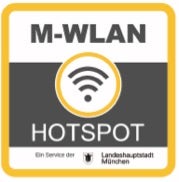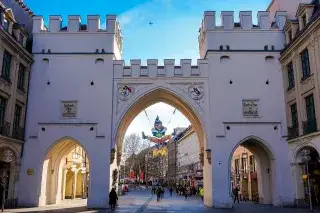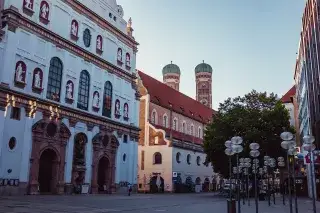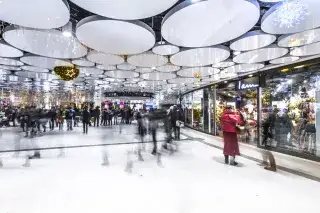The Stachus is one of Munich's most important squares
The Stachus: Information about Karlsplatz, public transport and history
Karlsplatz, known amongst locals as Stachus, is one of Munich's most famous squares. The western entrance to the pedestrian zone is an important local transport hub.
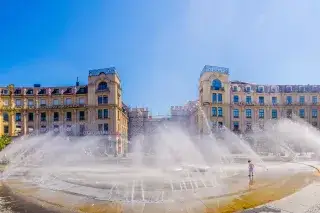
More actions
From shopping to public transport: Stachus at a glance
- Karlsplatz or Stachus? A question that confuses many visitors. Officially, the square is called Karlsplatz, named after Elector Karl Theodor. Unofficially, however, Munich residents have been calling it "Stachus" for centuries - after a certain Eustachius Föderl's inn that used to be located here.
- "There's a bustle here like on Stachus": a common saying in Bavarian. It's true: There is always a lot going on at the Stachus. It is considered one of the busiest places in Europe. Today, cars no longer drive through the square like they used to until 1972 - but there's still lots of traffic nearby on Sonnenstraße.
- Transport hub: S-Bahn, U-Bahn, streetcar, night bus - pretty much every important means of transport in Munich stops at the Stachus. From here, almost every destination in the city can be reached.
- Leisure: On hot summer days, the circular Stachus fountain offers perfect cooling. But also in winter, the Stachus has high recreational value - then you can skate here during the Munich "Eiszauber" (Ice Magic).
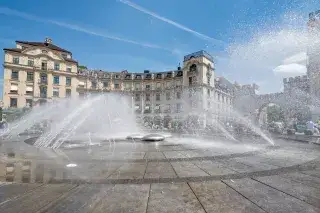
A city gate with history: the Karlstor
The Karlstor closes off the Stachus in the direction of the pedestrian zone and is not only beautiful to look at, but also has historical significance:
- Along with the Sendlinger Tor and the Isartor, it is one of the last remaining medieval city gates in Munich.
- It was built in the 14th century. In former times it was called "Neuhauser Tor", because the road from Munich to Neuhausen passed through here.
- In the archway, the so-called collar heads protrude from the corners. In addition to the legendary coachman Krenkl, inventor of the famous Bavarian proverb "Wer ko, der ko" (loosely translatable as "Not everybody can do it like me"), the so-called "Finessensepperl", Bavaria's last court jester also looks down on passers-by.
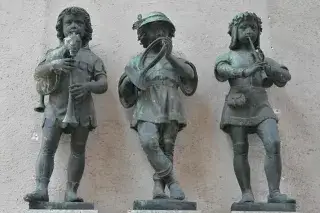
History of Karlsplatz - from salt route to pedestrian zone
Karlsplatz has always played an important role in Munich's urban development. After all, the city has always owed its prosperity to the salt route on which it lay. Where the important route left the still young city to the west, the first Neuhauser Tor was built in the 13th century. Because Munich was growing rapidly, a larger, stronger gate was built in front of it in the 15th century.
In 1791, Elector Karl Theodor ordered the fortifications and the city walls to be dismantled. In their place, the Karlsplatz was created in its current outline. But: the people of Munich did not really like Elector, and did not call the square Karlsplatz - but continued to much prefer Stachus.
From today's perspective, it's hard to imagine: once, cars and streetcars drove right across Stachus and through Karlstor into Neuhauser Straße. That came to an end in 1972, when Munich's pedestrian zone was created.
